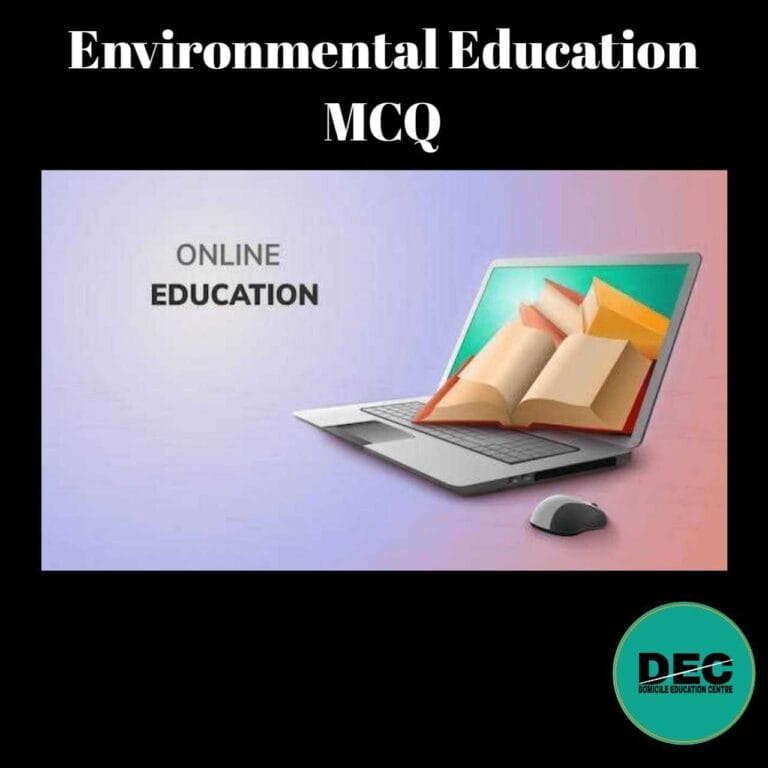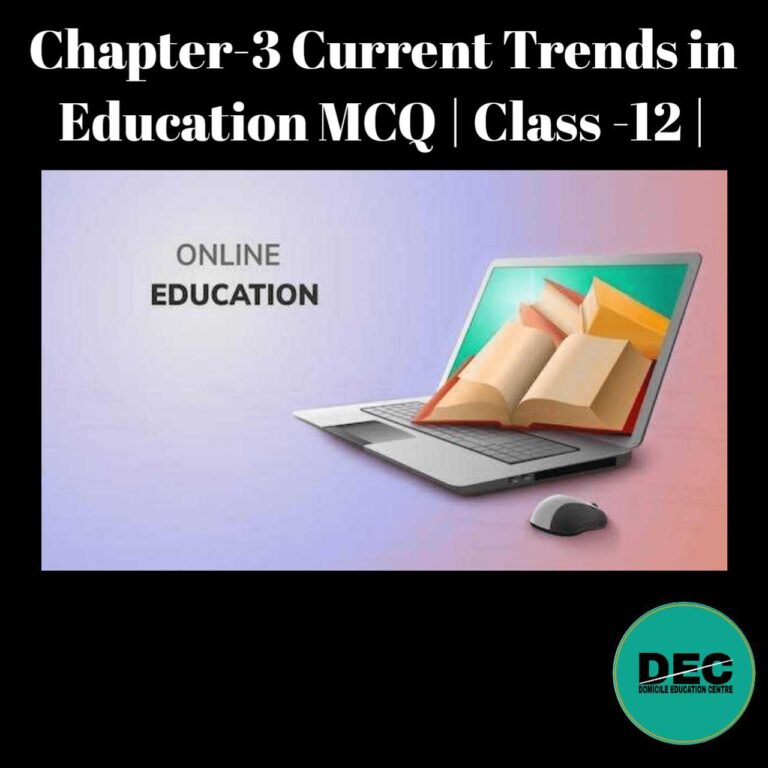Environmental Education MCQ
Here You will get Second Part Environmental Education MCQ and Previous page You will get it its first part.
28. Which International Conference first emphasised environmental education globally?
A. Rio Earth Summit, 1992
B. Stockholm Conference, 1972
C. Kyoto Protocol, 1997
D. Paris Agreement, 2015
Ans: Option B. Stockholm Conference, 1972
29. Who is known as the ‘father of environmental science’?
A. Rachel Carson
B. Carl Linnaeus
C. Aldo Leopold
D. Charles Darwin
Ans: Option A. Rachel Carson
30. Environmental education was made compulsory at all levels of education in India by which court?
A. High court
B. District court
C. International court
D. Supreme court
Ans: Option D. Supreme court
31. Which of the following is a method used in environmental education?
A. Computer coding
B. Lecture only
C. Industrial training
D. Field trips and outdoor activities
Ans: Option D. Field trips and outdoor activities
32. Environmental education became a part of school education in India after the directive of:
A. Parliament
B. Supreme court of India
C. Prime Minister
D. Ministry of Education
Ans: Option B. Supreme court of India
33. Which of the following is NOT a component of the environment?
A. Atmosphere
B. Biosphere
C. Hydrosphere
D. Lithosphere
Ans: Option D. Lithosphere/lithography
34. which organisation is responsible for coordinating global environmental issues?
A. UNESCO
B. FAO
C. UNEP
D. WHO
Ans: Option C. UNEP
35. Which organization started the ‘Earth Day’?
A. United Nations
B. Green Peace
C. Environmental Protection Agency
D. Gaylord Nelson
Ans: Option D. Gaylord Nelson
36. The ‘Chipko movement’ was related to:
A. Wildlife protection
B. Water conservation
C. Forest conservation
D. Pollution control
Ans: Option C. Forest conservation
37. The term ‘sustainable development’ was popularized by which report?
A. Stockholm report
B. Kyoto report
C. Rio Declaration
D. Brundtland repot
Ans: Option D. Brundtland report
38. Which of the following is NOT a principle of sustainable development?
A. Environmental protection
B. Social equity
C. Overconsumption of resources
D. Economic viability
Ans: Option C. Overconsumption of resources
39. Deforestation mainly affects which of the following?
A. Urbanisation
B. Biodiversity
C. Industrial growth
D. Fossil fuel production
Ans: Option B. Biodiversity
40. Which is the term for the variety of life on Earth?
A. Ecology
B. Biodiversity
C. Biodegradable
D. Conservation
Ans: Option B. Biodiversity
41. Which of the following is a major cause of air pollution?
A. Deforestation
B. Use of CFCs
C. Industrial smoke
D. All of the above
Ans: Option D. All of the above
42. Which of the following is a renewable resource?
A. Coal
B. Petroleum
C. Wind energy
D. Natural gas
Ans: Option C. Wind energy
43. Which gas is primarily responsible for global warming?
A. Oxygen
B. Nitrogen
C. Carbon dioxide
D. Hydrogen
Ans: Option C. Carbon dioxide
44. Which of these is an example of non-biodegradable waste?
A. Vegetables peels
B. Paper
C. Plastic
D. Cotton cloth
Ans: Option C. Plastic
45. Deforestation mainly results in:
A. Increased rainfall
B. Soil erosion
C. Rich biodiversity
D. Decrease in greenhouse gases
Ans: Option B. Soil erosion
Archives
46. Which of the following is NOT a method of conservation?
A. Recycling
B. Reusing
C. Burning waste
D. Reducing consumption
Ans: Option C. Burning waste
47. Which of the following is a cause of water pollution?
A. Solar energy
B. Industrial waste
C. Afforestation
D. Wildlife conservation
Ans: Option B. Industrial waste
48. Ozone layer protects us from:
A. Visible light
B. Infrared rays
C. Ultraviolet rays
D. Radio waves
Ans: Option C. Ultraviolet rays
49. The greenhouse effect is caused by:
A. Acid rain
B. Air pollution
C. Increased carbon dioxide in the atmosphere
D. Ozone layer depletion
Ans: Option C. Increased carbon dioxide in the atmosphere.
50. The term ‘biodiversity’ refers to:
A. Number of people in a region
B. Number of species in an area
C. Number of buildings in an area
D. None of the above
Ans: Option B. Number of species of an area.
51. Which of the following is NOT a cause of air pollution?
A. Burning fossil fuels
B. Industrial emissions
C. Planting trees
D. Vehicle exhaust
Ans: Option C. Planting trees
52. Which of these human activities contributes most to water pollution?
A. Wind energy production
B. Organic farming
C. Industrial waste discharge
D. Wildlife conservation
Ans: Option C. Industrial waste discharge
53. Ozone layer is found in which layer of the atmosphere?
A. Troposphere
B. Mesosphere
C. Stratosphere
D. Thermosphere
Ans: Option C. Stratosphere
54. The major cause of acid rain is:
A. CO and CO2
B. SO2 and NOx
C. Chy and CO2
D. H2S and CO
Ans: Option B. SO2 and NOx





Recent Comments